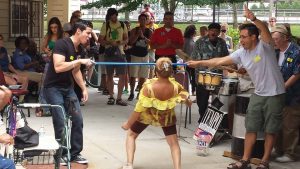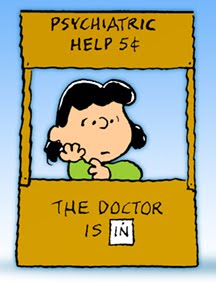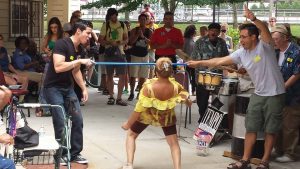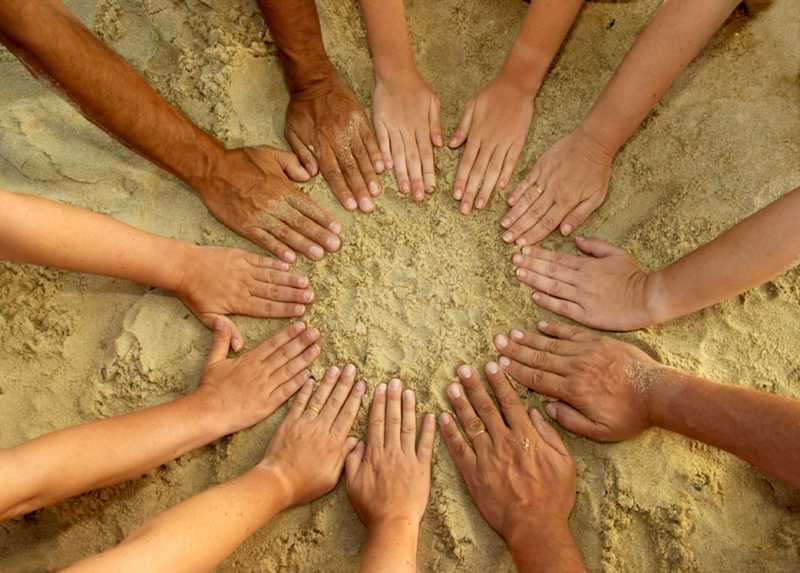
by Mindy Fried | Jul 8, 2015 | circus arts, connections with people, dance, diversity, festival, human connection, Jamaica Plain Porchfest, music, porchfest, spoken word, storytelling, theatre
Melz Durston: This weekend, Jamaica Plain will come alive with the sounds of local songwriters and the scents of citronella burning on the breeze. Inspired by Somerville’s annual community gathering, Mindy Fried and Marie Ghitman established JP Porchfest officially last summer, and this year, the duo sees the culmination of their hard work unfolding all over the neighborhood. Featured at Saturday’s all-day festival are more than 130 musicians playing across 72 porches, including Mark Lipman, Sugarcoma, Between Trees, the Isabel Stover Trio, and former Fuzzy member Chris Toppin and her band LOVE LOVE.
Vanyaland caught up with Fried about the behind the scenes work involved in setting up JP Porchfest, the evolution of her community, and her efforts to bring everyone together for the event. For the full list and schedule of performers, click here.
Melz Durston: Jamaica Plain has its own personality, when you compare it to downtown Boston. How did Porchfest evolve to fit in with what JP currently has on offer, for music-minded folks?
Mindy Fried: There are many neighborhoods throughout the city that have a personality and a life of their own. I have lived in Jamaica Plain for almost 35 years, and when I meet some native Bostonians, my lengthy tenure in the city doesn’t translate to actually being from here! That said, I have seen a transformation in Jamaica Plain over the years. Jamaica Plain, as long as I’ve lived here, has also been a welcoming destination for people in the LGBTQ community.
In the past, you have hosted Chris Toppin (Love Love, Fuzzy) and Mary Lorson (Madder Rose, Saint Low); do you have plans to create a mini festival taking place in just one venue in the future, featuring Boston musicians, or is the whole point of Porchfest, to feature different locations and in doing so, give people who are local to JP, the chance to perform?
Our focus is to create a decentralized festival, one in which the audience moves around from place to place. It’s almost like a backyard barbecue on steroids! We tried to cluster the porches so that the audience could stay within a fairly small radius, and be able to hear five or six bands or solo musicians within the four hour period of the event. This coming year we will expand the hours to six, and we are also expanding the event to other parts of the neighborhood. The whole point of Porchfest is to feature different locations and give local musicians an opportunity to perform.
Do you think that Boston/Cambridge/Somerville/Allston have a passionate undercurrent running throughout their neighborhoods — where musicians are always seeking ways to create?
Certainly, the other neighborhoods you mention, and many others throughout the area, have a lot of creative people looking for ways to connect. Through our experience with JP Porchfest, we found that musicians really welcomed the opportunity to be part of a community building experience. This year, we will have more bands, and we will also include circus arts, theater, dance, and spoken word.
Is there a harmonious collaboration to be found, between existing venues and separately organized events in JP and other neighborhoods that do not rely on established venues?
We are following our instincts as organizers and lovers of music, and are just beginning to make some really nice connections with other groups that are putting on music events. I think that over time, we will explore some of these connections further. But what distinguishes what we are doing from the more traditional performance venues is that we draw from the community — including professionals and aspiring musicians — who perform in the community, and they have an equal opportunity to be part of the event — it is not curated — whatever level of musicianship they have.
Have you noticed a difference yourself, in your home-city, over the years, with people becoming more insular and less likely to go out and enjoy a live show? Especially with online-focused interactions including live streaming of concerts such as Boston formed Concert Window?
That is an interesting question, Melz. As a sociologist, I think a lot about the issue of community and the extent to which people feel isolated and disengaged. In my own experience, I am finding that the people in my universe want even more opportunities for social connection. Every time I think that my street or my community is so unique, I discover that other communities around the country are creating opportunities for people to gather and connect. Consider the phenomenon of “meet ups”, where people use the Internet to find a group of people who share an interest in some sort of activity, but then get together — in person — for a particular event or gathering. One might point to this and say that it is borne out of the lack of community, but I think it speaks to the desire of community and the willingness of people to reach out to create it themselves. As to whether people are going to live shows, I’m really not sure. I know that I think twice about going to a live show these days because of the cost. Right now, there is a touring alternative chamber orchestra that has a storefront in Jamaica Plain called A Far Cry. Some of my friends and I provide housing for them when they are in Boston, in exchange for going to their concert. They’ll be playing at porchfest on Saturday.
In what ways do you hope that JP Porchfest will bring people out and together again? I think Concert Window regularly ties in with live shows at Club Passim, which keeps this live element…
In order to have a successful event, we realize that we need to work throughout the year to deepen our relationships with people in the neighborhood. We are working closely with a variety of community organizations to reach into neighborhoods where we only had a small presence this past year, to broaden that reach. One of the staff people from a community organization we work with has excellent contacts in all of the Latino media outlets, so this will be tremendously helpful in bringing out this segment of the population. We are continuing to work organizations to ensure that people of all socioeconomic backgrounds are involved. We reflect on what a success the event was last year, even though it was just our first year. We believe this speaks to the hunger for community and the desire to create and consume art.
How much organizing and inspiration has the whole project taken and are there things you might do differently at future Porchfests?
Organizing Jamaica Plain Porchfest took an extraordinary amount of time and energy, but we loved it. In order to create an event that would go smoothly, we established relationships with the City of Boston arts administrators, the local police, the city’s neighborhood services, and the Office of Inspectional Services. We didn’t want to have any surprises undermine the success of the event. And then we discovered that in meeting with all of these folks, we were creating a community of support that not only helped us avoid problems, but also established the event as part of the City of Boston roster of cool things happening.
Any plans to take them outside of JP or to other cities, or is this a purely local project?
We believe that any community could create its own Porchfest. We have friends all over the country who want to do it. The main barriers are motivation and time. Marie, my co-organizer, has begun writing a simple ‘how to’ guide, and has had one meeting with a musician who would like to organize a porchfest in her community.
Would you bring former GRCB (Girls Rock Camp Boston) or LRCB (Ladies Rock Camp Boston) bands/acts into your program, in the future?
As you mentioned, LOVE LOVE played last year’s porchfest. Now that the event was a success, we would love to work more closely with Chris Toppin and GRCB and LRCB girls and women.
What was it that inspired you to start up Porchfest in the first place?
I am a closet singer and pianist, but definitely not ready for prime time. My inspiration came from a desire to build community through the power of music. Marie, my co-organizer, and I have been friends for many years, co-ran a childcare cooperative when our now adult kids were babies, and we welcomed the opportunity to work together. The experience of organizing JP porch fest was truly wonderful. There was a lot of laughing and inspiration in this experience.
What was the last gig you went to in the Boston area, and have you discovered new local music, through hosting Porchfest and through the people you have met?
The last gig I went to was a concert by Debo Band, which is headed up by Ethiopian-American musician, Danny Mekonnen. A couple of Debo off-shoots played JP Porchfest and they were amazing. So it was thrilling to hear them play in concert. Debo has gotten quite a bit of recognition, and we’re hoping that they’ll still honor us with their musical presence in our home-spun event!
JAMAICA PLAIN PORCHFEST :: Saturday, July 11 from noon to 6 p.m.
All-ages, free: Full schedule of performers can be found at jpporchfest.org
by Mindy Fried | Aug 6, 2014 | arts, community, diversity, festival, human connection, music, organizing, porchfest, program evaluation, social science research, sociological imagination
![]()
For a couple of decades, I have been an “applied sociologist”, meaning that my sociology leaves the classroom and situates itself in organizational contexts. There are many ways that applied sociologists “do sociology”. For the most part, my work focuses on evaluating a range of programs and policies to help organizations get stronger and ultimately, bring in more funds so they can continue to do their good work. Applied sociology may be perceived by some as the step child of academic sociology. “Professor” is a far more classy title than Senior Research Associate or even, Wowza Evaluation Research Expert! But academic and applied sociology are equally good options; the choice to pursue one or the other has more to do with the job market, as well as one’s career goals and interests. That said, applied sociologists have fewer institutionalized steps along the career ladder to achieve “success”, and we certainly experience less institutionalized scrutiny. For better or worse, applied sociologists also don’t generally have a “family” of colleagues for life!
A lot of us “applied folks” are happy with our choice. The work is challenging, and the potential to improve programs and policies that improve people’s health, education, incomes and more is satisfying. Many of us also love to teach, but generally when we do, we’re on the lowest rung of the totem pole as adjuncts, with low wages, no benefits and depending on the institution, no status, even if one is a stellar teacher whose students adore you. But unlike adjuncts who are scraping a living together teaching multiple single courses, we may choose to teach a course, without fully depending on this income.
This spring, I discovered another way to put my sociology into action, when I joined with a friend to organize a neighborhood music festival on porches, called “Jamaica Plain Porchfest”(www.jpporchfest.org).
My type of applied sociology had, for the most part, been stuck in a room, or on occasion, at an event or rally. But I felt ready to break out. While I have been evaluating arts-based programs for a number of years, I found that I could bring my sociological eye to designing and implementing this participatory arts-based musical event. Luckily, I was partnered with an old and dear friend who brought the same sensibility and perspective.
Our sociological eyes went into motion from the very beginning of our planning, as we identified the “outcomes” we wanted to achieve for this event. We live in a community that is considered very diverse, in terms of race/ethnicity, class and sexual/gender orientation. But in reality, the community is very divided. There is a “Latin Quarter” which houses Cubans, Dominicans, Puerto Ricans and Central Americans; there are public housing developments that cloister poor people in large high rises; there are new mixed-income housing developments; there are sections of “town” that are entirely working class, and others that are entirely middle class. Our goal was to bring the various strains of the community together – bridging race/ethnicity and class – using music as the vehicle.
The phenomenon of “porchfests” is not new. The first one was organized in Ithaca, New York in 2007, and now there are 20 of them in cities and towns throughout the U.S., including Tucson, Napa Valley, Boulder, Buffalo (my home town!), Salt Lake City and in Somerville, Massachusetts, the porchfest that initially inspired us. From the looks of the incredible photos on each of their porchfest websites, we can see that they are joyous events that build community. From our conversations with the Ithaca and Somerville porchfesters, we also know how successful they are in promoting community bonding, as people come out on the streets to enjoy music together.
In contrast to some of the neighborhoods where other porchfests take place, around half of Jamaica Plain’s residents are people of color, including 25% Latino, 14% African-American, and 4% Asian, and 50% are white. Our commitment was to promote bridging and bonding, by pursuing three strategies: include a diverse range of musicians in terms of their racial/ethnic backgrounds as well as their musical genres; locate and include porches throughout the neighborhood where musicians can play; and engage and bring out diverse audiences. We hoped that these strategies would help to overcome some of the “tri-furcation” or “quadri-furcation” (!) in the ‘hood.
Initially, we created a Facebook page with a call for musicians and porch hosts. But a lot of people don’t go on Facebook, including 27% of online adults who don’t use social media, and another group of people defined as Facebook “resisters”.
So we reached out to local non-profit organizations, some of whom serve youth, others who manage low-income housing, others who coordinate small business activity, and yet others who run programs around maintaining a beautiful, large park in one of the neighborhood’s low-income neighborhoods. We also reached out to students at a highly renowned local music college. We even “scouted” musicians, sometimes at a local park or other venue, as well as musicians we just heard of through friends.
My organizing partner and I started with the idea that we’d do a “pilot” event, with three bands and three porches. But if were to stay true to our goals, we needed to do more than that. Ultimately, we had 60 bands sign up, and enough porches committed so that two bands could play on each porch. We spent hours poring over the mix of bands and porch hosts we would match, focusing on bringing together a mix of people from diverse backgrounds, by race/ethnicity, gender, and where possible, class. In the end, diverse bands and solo musicians shared a stage – aka porch – hosted by a third party who generously offered her/his porch.
We had been informed that one of the other porchfests almost got shut down one year because there were crowds of people roaming the streets, obstructing traffic and trashing neighbor’s lawns. So we created a tiered structure, in which each porch had a “Porch Fun Manager”, each cluster of porches in a particular part of neighborhood had a “Cluster Manager”, and the overall event had two “Network Managers” (me and my partner), who kept an eye on the whole picture. Organizational sociology in action…
While the two of us organized this event, we realized that we were operating within the construct of social institutions that needed to be privy to our plans, offer advice, and inform us of any limitations. So we met with officials from the City, from the police, and from a neighborhood services department that does city permitting. (We were committed to NOT have permits for each porch! We didn’t have the budget and we didn’t want to deal with the bureaucracy.)
![]() And did I mention that we had NO budget whatsoever? This was one of the appeals of the event. Nothing commercial. No “brought to you by”, banners, logos or even food trucks! We received a few in-kind donations: one from a friend, another from the City of Boston which paid for printing colorful maps of the porch routes to be used on the day of the event, and another from a printer who didn’t charge us for printing postcards to announce the event. For many people, the fact that JP Porchfest was commercial-free was a breath of fresh air.
And did I mention that we had NO budget whatsoever? This was one of the appeals of the event. Nothing commercial. No “brought to you by”, banners, logos or even food trucks! We received a few in-kind donations: one from a friend, another from the City of Boston which paid for printing colorful maps of the porch routes to be used on the day of the event, and another from a printer who didn’t charge us for printing postcards to announce the event. For many people, the fact that JP Porchfest was commercial-free was a breath of fresh air.
So how did it go? On the day of the event, we had 7,000-8,000 people roaming throughout the neighborhood listening to music, and hundreds showed up at a local restaurant, Bella Luna Restaurant and Milky Way Café, for an after-party which served $5 all-you-can-eat pizza! Anecdotally, it seemed that everyone loved the event from the audience to the musicians to the porch hosts.
But a good “action sociologist” can’t just leave it there! We needed to evaluate the impact of the event. In order to count the numbers in attendance, we used porchfest stickers, and had intended to count the leftovers to gauge the size of the crowd, except we ran out of stickers in one hour! We consulted an audience researcher on how to calculate the final numbers, and it’s her figures – 7,000-8,000 – that we are citing.
We also distributed very short surveys with a few questions that would help us learn what worked and what didn’t work, as well as to identify the demographics of porchfesters.
Nearly 100% reported that the event was excellent or very good (we’re still working on analyzing this data). In addition, we had two sociology grad students from Brandeis University (my alma mater) traversing the event and interviewing participants about their experience.
![]()
And we queried musicians and porch hosts to provide more detailed feedback on their experiences performing at JP Porchfest, and learned that they made great connections with the other band with whom they shared their porch as well as with their porch hosts. They were pleased that they were able to add people to their mailing lists and increased their CD sales. We also heard that small businesses had increased sales. One of our colleagues and friends from Hyde Square Task Force, a JP youth leadership organization, conducted her own short survey to see if business picked up in the “Latin Quarter”, and interestingly, small shops like the local beauty shop and local rotisserie chicken take-out place increased their business by anywhere from 100-400%!
Finally, we wanted to document the event, creating a team of professional filmmakers who shot the event and will produce two videos. One is a documentary about JP Porchfest that centers on three narratives: a long-time Latina political activist who had just moved into affordable housing and wanted to use porchfest as a way to unite her racially divided neighborhood; a veteran rocker musician who writes songs about JP and is a staple in the ‘hood; and a group of youth leaders from a local non-profit organization who were accompanied by two filmmakers who documented their response to the event and the different types of music. The other is a 5-minute how-to video, which will be accompanied by a training guide that we write, in order to help other communities produce their own porchfests!
My organizing partner and I were initially worried that no one would show up, and then after the event, we worried that we would experience a post-event malaise. But we have been disproven twice! We are now planning JP Porchfest 2015, this time knowing a lot more than what we knew before we started. Soon we’re going to launch a Kickstarter campaign, and Bella Luna/Milky Way has offered us their venue for two fundraisers.
In the end, we determined that we had done a pretty good job, maybe even a really good job! While roughly one-third of our musicians were people of color, we want to increase the diversity of the audience, and we are developing a strategy to do so.
In a follow-up conversation I had with Ayanna Pressley, a brilliant African-American City Councilor who spoke at the event, I lamented that the audience wasn’t as diverse as we wanted it to be, and she told me, “you are acting like a woman!” I was startled. What did she mean? She told me that the event was a great success, but I was focusing on the negative. “We’ll work on that for next year”, she reassured me.
Photos/Video:
1. Woman doing limbo at Nate Smith House, affordable housing for elders. Band was Tempo International Rhythm Section.
2. Sterling Rhyne performing at home of Betsaida Gutierrez, housing activist. Photo credit: Sam Sacks.
3. JP Porchfest banner, created by Hyde Square Task Force Youth Leaders
4. Damn Tall Buildings. Photo credit: Damn Tall Buildings (selfie!)
5. The Amy Hoffman. Photo credit: Jane Akiba
6. Guts and Buttons. Photo credit: Sue Dorfman
7. Cornell Coley and Hyde Square Task Force. Photo credit: Jane Akiba
8. Filmmakers planning Porchfest videos
9. Son of Chris Antonowich, Riding Shot Gun. Photo credit: Sue Dorfman
10. Video, Rick Berlin and Nickel and Dime Band: “I Love My Street”
by Mindy Fried | Oct 9, 2012 | aging, communication, health, human connection, Shingles vaccination, support

I walk into the sterile conference room, realizing that everyone there is “of a certain age”. If I had to choose a demographic descriptor for this crowd, I’d just say “old”, and they’d probably kill me if they could read my mind. A young, as in twenty-something, woman approaches me with a clip board and we exchange forms. She assigns me number three, which I hope means a short wait, and tells me I can find a seat at the rectangular table. My fellow brethren look up at me, each new arrival becoming momentary entertainment until embarrassment or distraction takes over and they go back to their own little worlds, reading a magazine or looking at their phones. I rummage through my briefcase and discover that the piece of work I meant to bring with me is still sitting in my printer at home. Darn! This is not good! And then I remember that I, too, can plunge into my iphone universe. Oh, the glories of technology, shielding us from boredom and communication with others.

We’re all here to get a vaccination for shingles, which is a painful and horrific thing, according to my sister and my father who both contracted this virus-driven skin rash. I watched them suffer, so I’ll do anything to dodge that one. I smile at the couple sitting kitty-corner to me, and mindlessly say “how’s it going?” Expecting little in return in this sea of silent waiting people, I’m surprised that they want to chat, telling me that they had their shot and are waiting the prescribed 15-minute window to make sure they don’t have a reaction, which ranges from nothing to headaches, fever, diarrhea and a stuffy nose. “You look fine to me”, I quip, as they smile, a few minutes later picking up their bags and happily leaving this ad hoc club.
The shot itself is uneventful, and the guy giving it – the second young person in this cohort – is pleasant, sweet and maybe even a little handsome. For the same reason I am here – my age – I had a flu vaccine last week and that was also no big deal. In fact, I’m pretty good at this, I think, as I indulge in feeling proud of myself for something that requires little skill. Just as I am about to settle into my 15-minute window, an agitated man enters the conference room and when I tune in, I hear him arguing with the young woman, telling her that he doesn’t understand what she’s saying about insurance coverage. I have time to kill – at least another 11 minutes – so I listen, and then realize that I actually understand his problem and can help him. And so I do. The young woman seems relieved that someone else is handling him and walks away.

As soon as I step into the conversation, the man stops shouting and listens to me, his body visibly relaxing. Soon, armed with a couple of questions I have supplied him, he goes out into the hallway to call the benefits gatekeeper at his insurance company. He is decidedly less agitated and more focused, and I think about how anxiety is a horrible thing when it makes it hard to think clearly, and that this man’s confusion and upset was clearly getting him nowhere. He returns to the conference room in about five minutes and seems relieved. “Did you get the information you needed?”, I ask him from my seat at the head of the conference room table. The space between us is beyond the cultural norm for communicating with a stranger in a sea of unknowns. But I ignore the norms that define this space as a silent waiting room. He shouts back to me, joining this normatively rebellious moment, saying, “I’m all set, but they’re crazy over there!” I nod in agreement. Most institutions – including health insurance companies – produce crazy rules and the employees who have to follow them often lose perspective, so he’s lucky that this call was an easy one.

Once my 15-minute period is over, I get up to leave, passing this guy on the way out. He thanks me again for the helpful advice, but I know that it was the human connection that made the difference. Then, with a touch of worry in his voice, he asks if I had any reaction to the vaccination. Anxiety is a painful thing. And as I’m about to reply, he looks at me with a smirk and says, “Look how big your hair got!” I realize he’s joking, and I reply in kind, “Before the vaccine, it was this short”, gesturing a quarter-inch measurement with my thumb and pointer finger. We both laugh, and I think about the importance of being seen, of breaking through anonymity in social circumstances and ignoring the norms that mitigate against human connection. And I think about the saving grace of humor, as it slices through anxiety to produce a shared experience. And I have a feeling that as I age, that all of this will become even more important.







